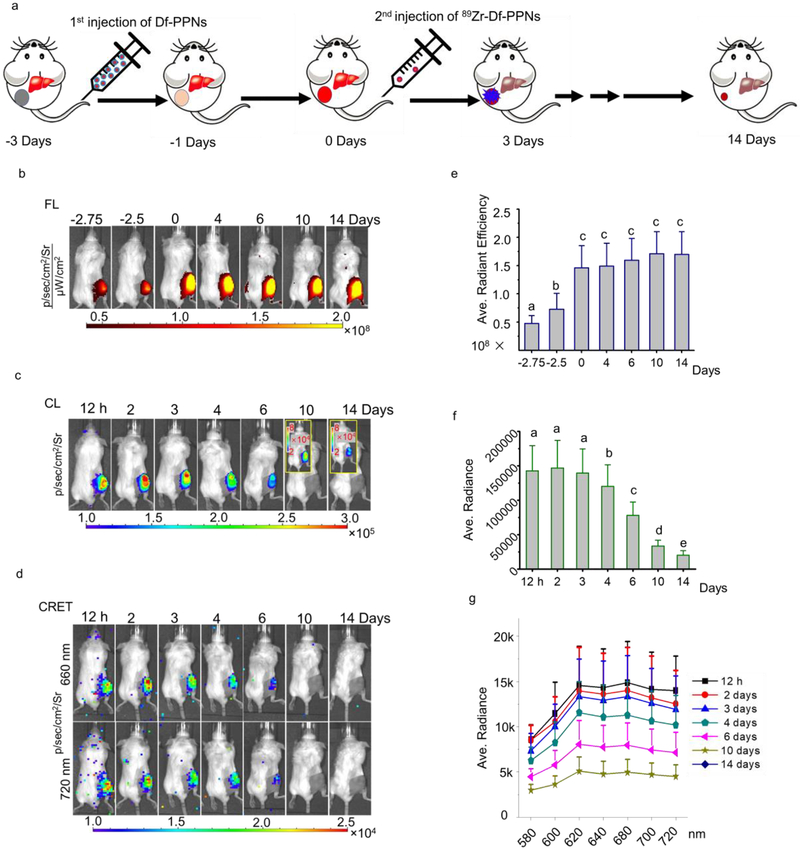Figure 1.
Missile-detonation approach to delivering tumor in-suit light source and therapy reagent. (a) Schematic of the missile-detonation strategy, which first administered a high dose of Df-PPN as a CR energy receiver/missile passively targeted to tumor, followed by a low dose of the 89Zr-labeled Df-PPN as a CR energy donor/detonator for activated cancer therapy. (b) In vivo fluorescence (FL), (c) Cerenkov luminescence images (CL), and (d) Cerenkov radiation energy transfer (CRET) of 4T1 tumor-bearing mice taken after injection of Df-PPNs and 89Zr-Df-PPNs. Quantification analysis of in vivo (e) FL (different letters above the column mean comparing to each other p < 0.05, The different letters above the column mean that the p value is less than 0.05 while comparing to each other.), (f) CL, and (g) CRET of 4T1 tumor-bearing mice taken after injection of Df-PPNs and 89Zr-Df-PPNs.

